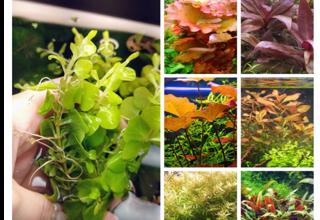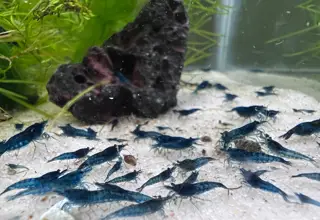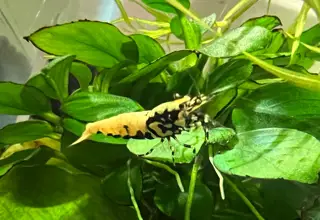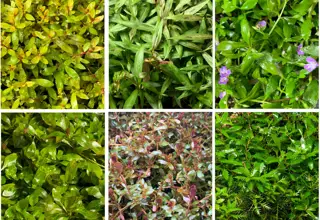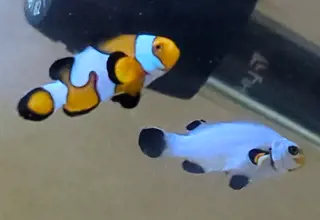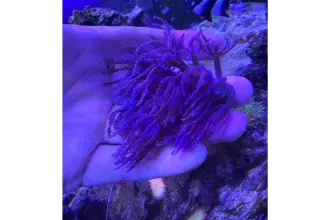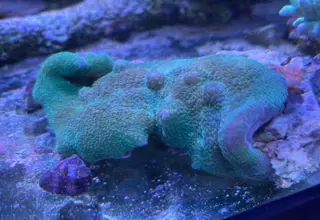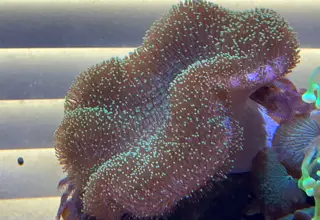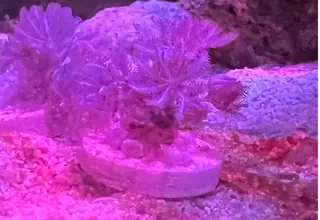Orange Spot Goby vs Diamond Goby: Similarities and Differences
Posted by Miles Harrison on 09/20/2022
Orange Spotted Gobies (Amblyeleotris guttata) and Diamond Watchman Goby (Valenciennea puellaris) are often confused as being the same species due to their appearance but make no mistake, these gobies are quite different! In this post, we’ll discuss some of the similarities and differences.
Tank Requirements for the Orange Spot Goby
Orange Spot Gobies are quite a bit smaller than Diamond Gobies, and as a result are suitable for smaller, nano tanks. Orange Spot Gobies require an aquarium that’s at least 10 gallons in size. It’s best to introduce the Orange Spot Goby into a mature aquarium, where ammonia and nitrate levels are 0ppm, and water chemistry is in balance.
Orange Spot Gobies need a good amount of hiding places, and open waters for them to swim around. If you choose to house these in a nano tank, make sure it’s not too overcrowded with live rock or other forms of hardscape.
Tank Requirements for the Diamond Goby
Diamond Gobies are a bit larger when compared to an Orange Spot Goby, and reach up to 6 inches. As a result, we recommend an aquarium of at least 30 gallons. These fish are a bit more territorial, so you’ll want to provide hiding spots and a sandy substrate for the fish to sift through. Typically Diamond gobies are a bit more active than the Orange Spot Goby.

Diet & Feeding for the Orange Spot Goby
Since Orange Spot Gobies are a bit smaller than Diamond’s, these fish can do well when fed once a day. These fish can be fed both fresh and frozen Mysis shrimp, brine shrimp, and even table shrimp.
Diet & Feeding for the Diamond Goby
We recommend feeding Diamond Gobies at least 2-3 times a day. These fish are initially less interested in common aquarium foods, but over time, they will eventually eat copepods, frozen or live brine shrimp, Mysis shrimp, and other meaty foods.
The lifespan of a Galaxy Koi Betta largely depends on how they’re treated. Maintaining pristine water conditions, providing an optimal diet, and being sure not to stress your fish by adding aggressive tank mates will allow your galaxy betta to live a healthy and happy life.
Lifespan and Size of an Orange Spot Goby
Unfortunately, orange spot gobies tend to have a short lifespan. These fish will typically only live for 1-2 years in captivity. Adult Orange Spot Gobies will typically reach about 3 inches in length.
Providing optimal water conditions, and a well-balanced diet will extend the life expectancy of this fish.
Lifespan and Size of a Diamond Goby
Diamond Gobies have been documented to live much longer compared to Orange Spot Gobies. Diamond Gobies have been reported to live between 5 to 8 years in captivity.
Providing excellent care will extend the life expectancy of this fish, which when fully grown, grows to about 6 inches in length.

Orange Spot Goby Breeding
Aquarists will be pleased to know that Orange Spot Gobies are capable of breeding in an aquarium. While we won’t get into the specifics of how to breed this species (we cover breeding in more detail in our orange spotted goby care guide), if you notice spawning behavior between a male and female pair, you can begin to set up a rearing tank to raise the larvae if any of the eggs hatch successfully.
Diamond Goby Breeding
Diamond Gobies will breed in an aquarium setting, and are also capable of changing gender. If you're interested in breeding Diamond Gobies, try and determine the gender of the goby before purchasing them.
It can take quite a while for diamond gobies to pair, and having two gobies does not guarantee that they will change gender to form a male-female pair.
5 Similarities of Orange Spot Gobies and Diamond Gobies
While we’ve covered a decent amount of subtle differences between both species, let’s go over some of the more obvious similarities
- Both fish are members of the Goby species. Gobies are small to medium-sized ray-finned fish that are found in marine, freshwater, and even brackish environments.
- Both fish have orange spots on their bodies . This feature is the cause of confusion among reef aquarists. Many think the Orange Spot Goby does not exist and is just a juvenile Diamond Goby.
- Orange Spot Gobies and Diamond Gobies can survive on a similar diet.. Both fish species are capable of consuming frozen or fresh brine and Mysis shrimp. A nice convenience for reef hobbyists who don’t want to purchase species-specific foods.
- Diamond and Orange Spot Gobies are capable of breeding in a reef aquarium. Both species are capable of laying eggs, allowing the reef aquarist to raise the fry. An exciting challenge for any experienced hobbyist!
- Both Diamond Gobies and Orange Spot Gobies are relatively small in size These fish are relatively small, opening up a lot of possibilities for additional tankmates.
Summary
While these fish have subtle differences, it’s important to note that Orange Spot Gobies and Diamond Gobies are in fact, two different types of fish.
After reading this post, you should now have all of the knowledge needed to know the difference between both species.
No matter which fish you choose for your next aquarium, one thing is for certain - you can’t go wrong with choosing either of these exciting and fun-to-watch fish!
